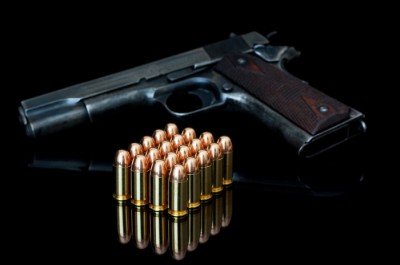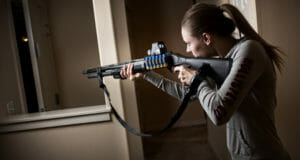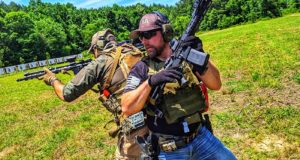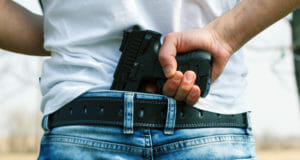 Gun manufacturers have overwhelmingly embraced the concealed carry movement that has swept the nation within the past 20 years.
Gun manufacturers have overwhelmingly embraced the concealed carry movement that has swept the nation within the past 20 years.
More firearms choices are available specifically designed for concealed carry today than at any other point in history. Once the realm of .25 auto pocket pistols, many manufacturers now make small, concealable pistols in regular calibers, giving us more sheer firepower than ever before.
Standing in stark contrast to all these new concealable wonder guns is John Moses Browning’s masterpiece, the 1911 pistol, which is just as popular today as it was over a hundred years ago when it was adopted as an Army sidearm. It’s the pistol design that just won’t die, adopted by countless manufacturers and available in most every country that allows firearms.
On the surface, the 1911 seems antiquated to the lay person. First of all, it’s big, heavy and usually made of all steel rather than high tech polymers. Assuming the model chosen is a single stack design, it only holds between seven and eight rounds of ammo onboard, which is about half that of modern equivalents. The 1911 is also a single action pistol, usually carried “cocked and locked”; hammer back, safety on, round in the chamber. Oh, and did we mention that the field strip process for the pistol requires several more steps than it would for say, a Glock or Beretta? All in all, by glancing at the specs, the 1911 falls dramatically short when compared to modern pistols. Who in their right mind would want a single action, low capacity, heavy pistol as a carry gun?
We’re here to tell you that the 1911 deserves another look, and if you are just looking at paper specifications, you’re missing out on the whole package. There’s no denying the 1911 has some quirks – after all, it was designed in the closing days of the 19th century.
How To Defend Yourself And Your Family Against The New Breed Of Lowlife Criminal Scum
But just because it’s old, doesn’t mean it’s bad – there are few, if any pistols that have had a century of refinement and tuning like the 1911 has had. This is a pistol design that’s stood the test of time, and as the saying goes, if it ain’t broke, don’t fix it. Let’s address some of the “shortcomings” of the 1911 in detail:
Size: The 1911 is the smallest big gun you’ll ever carry. Yes, government models rock a 5-inch barrel, but somehow, when the gun is on your person, it conceals beautifully. Part of that is due to the fact that most 1911s have single stack magazines, making them an extremely thin pistol, even compared to modern guns. 1911s also have lots of rounded edges, whereas modern guns (cough….Glock….cough) favor squared edges, which require that much more space. You’ll be pleasantly surprised at how well a 1911 conceals, even considering the size of the pistol, and if you aren’t there are smaller models available, like a 4.25-inch Officer’s Model, and other compacts based on the 1911 platform.
Weight: There’s no denying that your average 1911 is heavier than a garden variety polymer pistol, but that weight can work to your advantage. 1911s are mostly steel guns; very few have embraced alloys, and none to our knowledge have gone polymer, and thus, they’re quite stout. On the other hand, this weight makes the punch of a .45 ACP quite manageable, especially when compared to similarly chambered pistols. Go shoot a full sized 1911, and then compare that to a polymer pistol chambered in .45 ACP – few such pistols are fun to shoot at all, having really snappy recoil and overall bad manners.
Story continues below video
Magazine Capacity: Yes, a single stack 1911 is low on the magazine capacity scale, but there’s nothing saying you can’t carry additional magazines. The ergonomics of the 1911s magazine release are so perfectly positioned that mag changes are a snap as well. Finally, if you must have a high capacity 1911, there are manufacturers that make “wide body” double stack 1911s that hold 14+ rounds.
Single Action: If there’s one thing that scares neophytes, it’s the sight of a holstered 1911, hammer cocked. Like the Sword of Damocles, people think that hammer’s ready to drop if the user so much as sneezes. Keep in mind that as a single action pistol, the correct way to carry a 1911 is chambered round, hammer back, safety on, also known as condition one. This is an inherently safe method of carry – to fire a round, three things need to happen: one, the safety needs to come off; two, the grip safety needs to be depressed, and three, the trigger needs to be pulled. Compare that with a Glock, wherein only the trigger needs to be pulled to fire the gun. Which one is safer? Yeah, we thought so — that cocked hammer isn’t looking so scary now….
Finally, the whole package is just…right. The 1911 is an exquisitely balanced pistol, a fine shooter, and has plenty of power to boot. It’s an inherently reliable gun, even if it does have a lengthier field strip process than newer guns, but if you take care of it, the 1911 will never fail you. Consider also that the 1911 has experienced a dramatic resurgence in professional users. FBI’s Hostage Rescue Team, LAPD’s SWAT team, and Marine Corps Special Forces operators have recently switched to the 1911, even with a plethora of other designs on the market. Browning’s most famous creation is going strong well over 100 years after its formal adoption by our military. Perhaps it’s time to give it another look?
Sign up for Off The Grid News’ weekly email and stay informed about the issues important to you
 Off The Grid News Better Ideas For Off The Grid Living
Off The Grid News Better Ideas For Off The Grid Living




